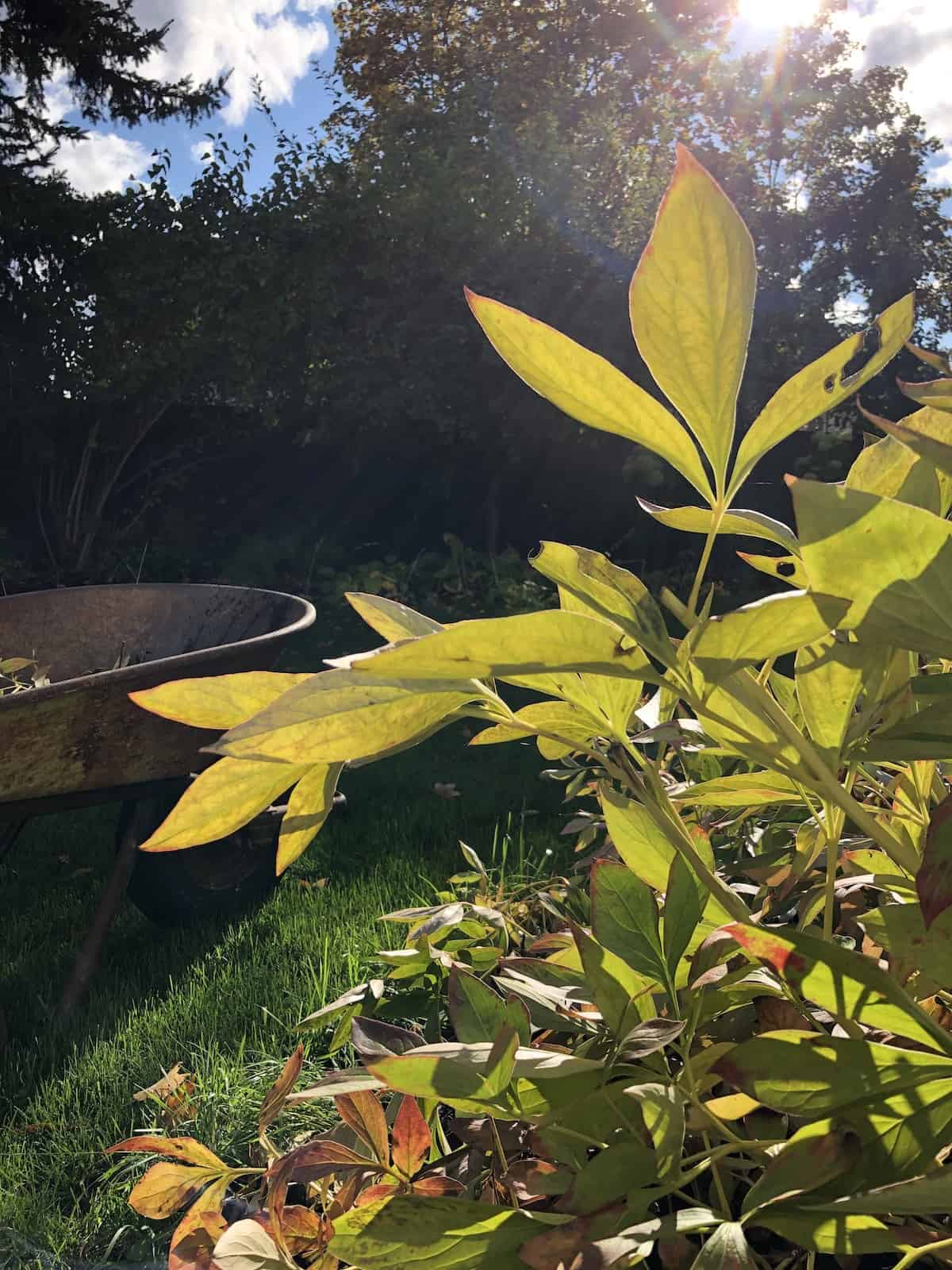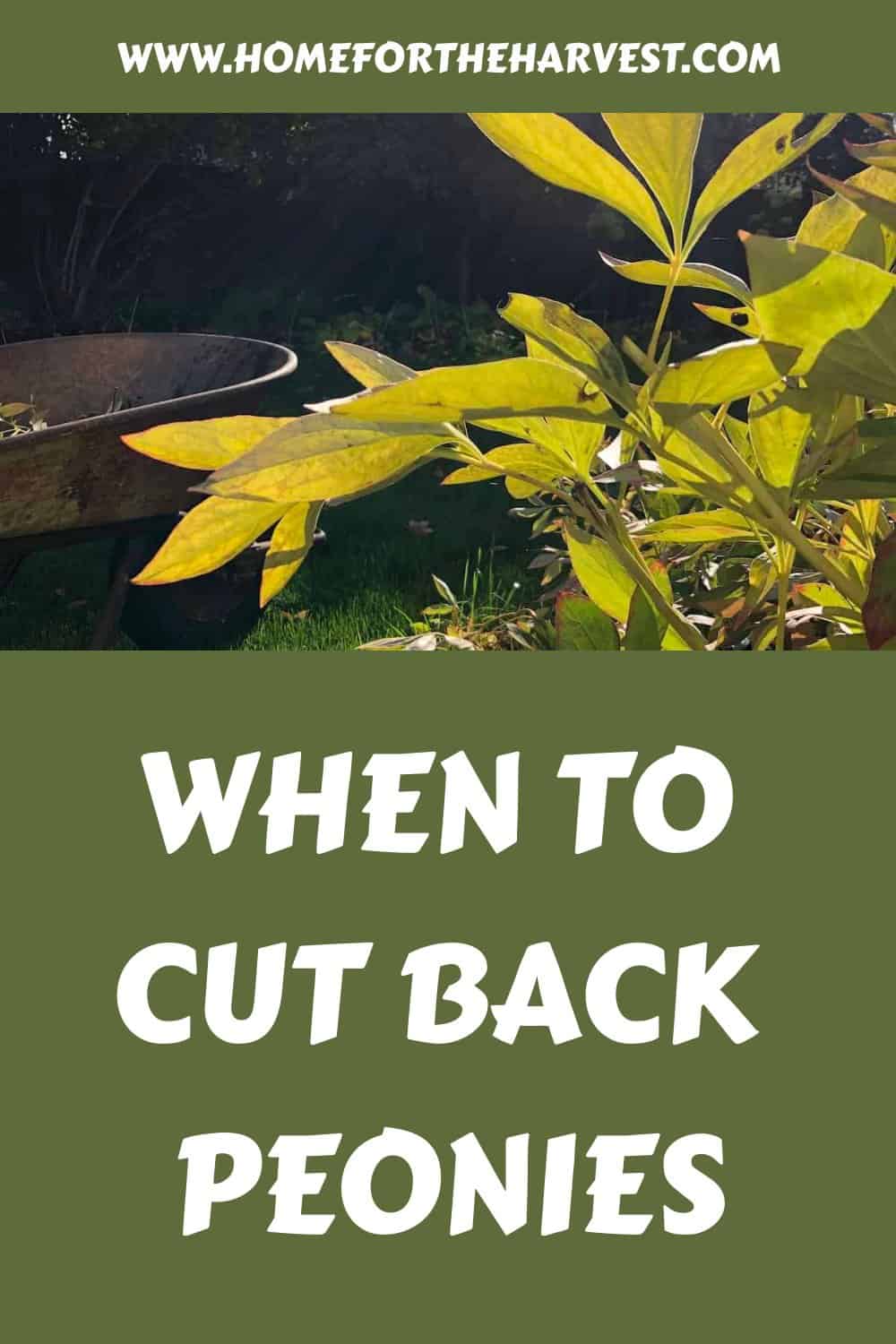Cut back peonies in the fall around the time of the first autumn frost. Spent flowers are generally trimmed off in June after they’ve blossomed, but the leaves of the plant should remain standing until mid-Autumn so the plant can produce next year’s flower buds. Cut back peonies when the first frost is forecast or soon after the stalks have been killed by freezing weather, often in October or November.
Cutting back peonies
The best time to cut back peonies is mid-late autumn. Cut back the entire peony plant in mid-Autumn, around the time of the first frost. This is often in mid-October, around the time that beautiful red and yellow autumn leaves are falling. In milder climates and warmer years, peony stalks may remain standing until November.
Different types of peonies should be cut at different times. For example, a tree peony should be cut directly after the plant blooms. Tree peonies have distinctly different upkeep from herbaceous peonies, which are pruned in the fall.
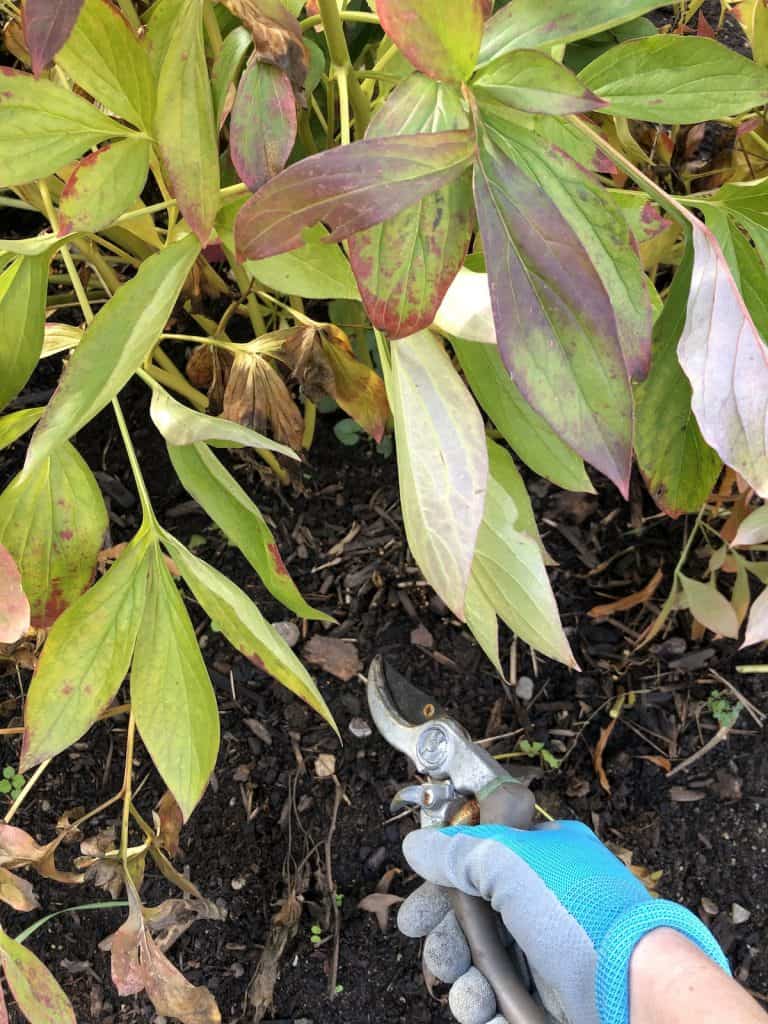
How to cut back peonies in the fall
Pruning peonies is done by trimming each stem down below the leaves. Remove each stalk almost down to the ground. Leave a few inches of stem sticking up and attached to the roots to find the plant in the spring.
This once-a-year maintenance is sometimes referred to as “hard pruning” instead of “cutting back.” Cutting back peony stems is easiest with a pair of handheld pruning shears.
You may be able to see a few of the pink “eyes” at the soil line (little buds on the top of the root crown) that will sprout up next spring. This is a good sign! These little buds are the very start of next year’s flowers.
Seeing “eyes” on the root crown in the fall means that the foliage of the plant has been working hard to create energy for the roots to grow. Observing the buds poking out of the soil also means that the roots aren’t planted too deep (which can inhibit flowering).
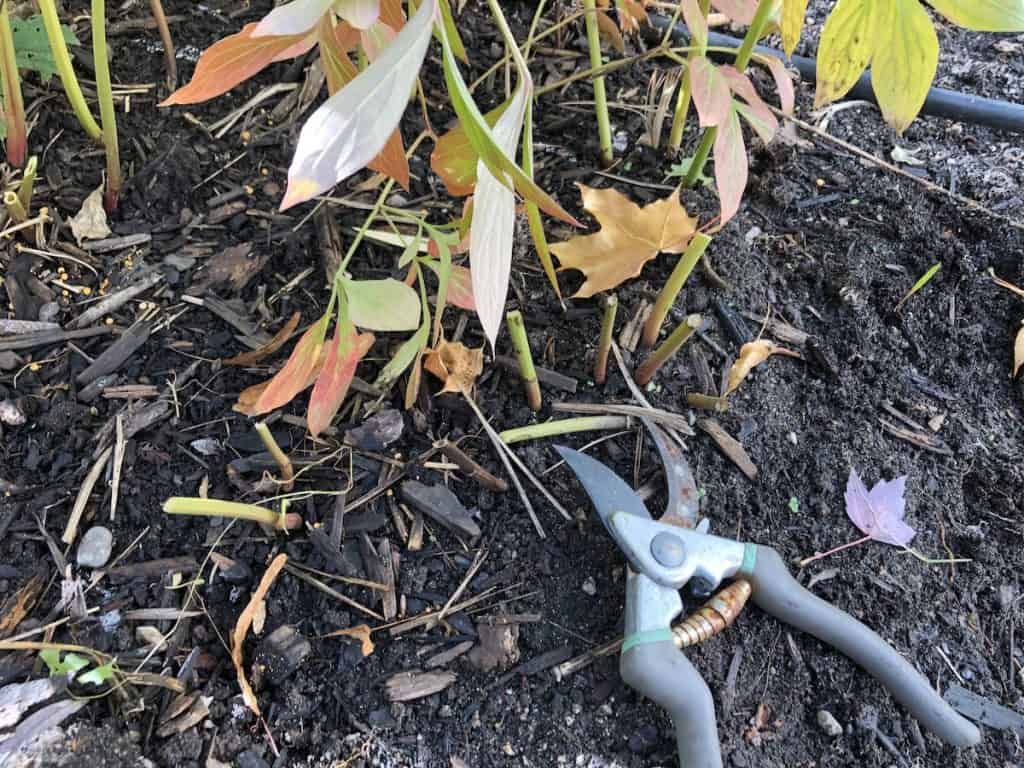
Why not cut peonies back right after they bloom
Do not cut peonies back to the ground in spring or summer. The plant needs to have its leaves for the process of photosynthesis.
Leaving the foliage on the plant for the entire growing season helps the plant create lots of energy using photosynthesis. The plant uses this energy to grow its root system and also to grow the buds for next year’s flowers.
Peonies don’t rest after they bloom in the spring. The leaves are busy producing energy to feed the roots of the plant. The roots of the plant are growing, extracting nutrients and water from the soil, and also “setting” the flower bud “eyes” that will shoot up the following spring. Let the plant maximize its growth potential by leaving the leaves on the peonies until the end of the growing season.
Peonies aren’t the only long-lived flower that needs to be left standing after it’s done blooming. Some of the best perennial peonies won’t thrive in the following years if cut back too early.
This includes leaving the foliage of peonies, irises, daylilies, and tulips standing throughout the summer months after the plants bloom. Check out this article for more info about how plants produce energy using photosynthesis.
When to deadhead peonies after they bloom
Spent peony blossoms should be snipped off the plants after blooming. The petals tend to go brown and become heavy with moisture, pulling the flower stalks right over like a soggy brown tennis ball.
Take off the faded flowers and dead peony blooms so the leaves can do their energy-making jobs for the rest of the summer.
Remove the stem to the right above the first top leaf. Leave the rest of the peony plant standing until autumn. The leaves create the energy stored in the roots over winter for the next year’s flowers. Leave the leaves!
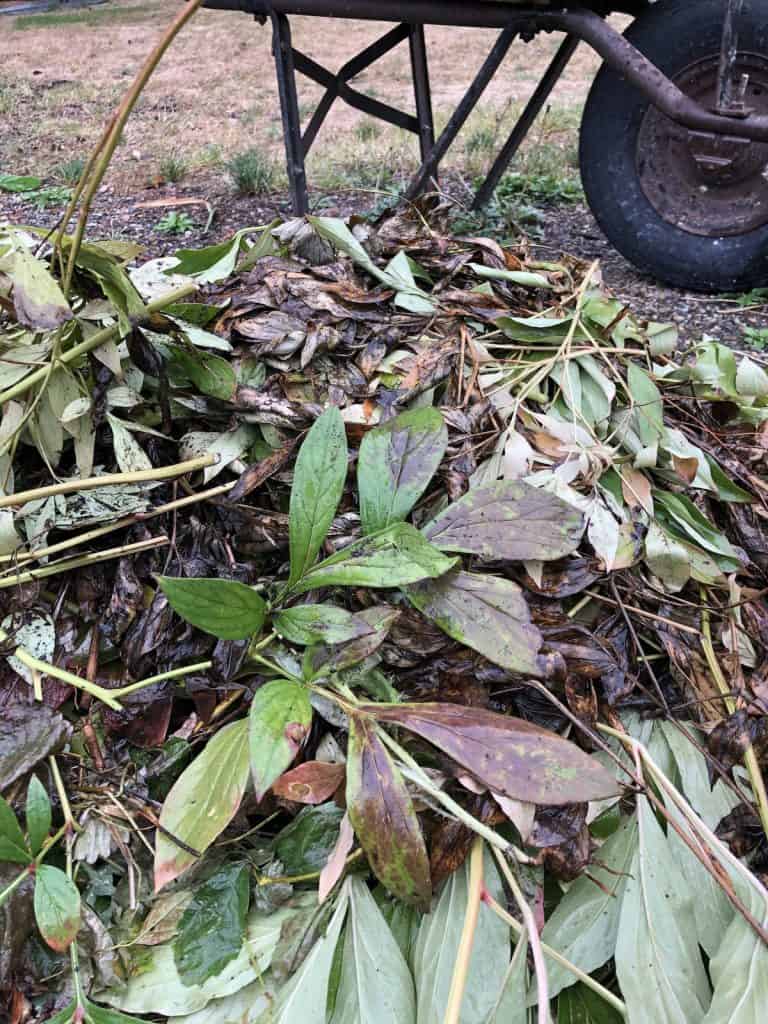
Why cut peonies back in the fall
There are a few reasons to cut peonies back in the fall, ranging from the health-conscious to the aesthetic. And not to be ignored, there is a common desire to put the garden to bed for the winter among gardeners.
There is something satisfying about feeling like you’re taking care of the flower beds and tucking them in for a long winter’s nap.
The main reason to cut peonies back in the fall is to remove foliage that may be diseased so that the plant is in better health the following year.
Peony foliage may fall victim to all sorts of maladies, including various blights, molds, mildews, and spots. Removing and destroying infected foliage lightens the load of the contamination.
“Peonies are subject to gray mold (botrytis blight). It causes flower buds to blacken and die and may lead to leaf and stem spotting. In serious cases, the stems wilt and collapse. To prevent it, cut back and destroy peony stems in fall and treat shoots with an organic fungicide like sulfur in spring, before the disease strikes.”
Perennials for Every Purpose: Choose the Right Plants for Your Conditions, Your Garden, and Your Taste (A Rodale Organic Gardening Book), by Larry Hodgson
Aesthetically, peony foliage provides little to no winter interest. There are no interesting pretty seed heads to observe or permanent woody branch structures. Garden peonies become a scraggly mess of dead foliage at the end of the growing season. It’s likely to be more attractive to slugs as a habitat than as a visual feature of the winter garden.
From a practical perspective, cutting back peonies in mid-late autumn provides for a last-chance weeding to reduce next year’s weed pressure in the flower bed.
There always seem to be a few straggler weeds in amongst the peony stems that are best removed before they overwinter.
The last common reason to cut back peony foliage in autumn is that it can be quite a bother in the early spring. Early spring frequently brings daily freeze-thaw cycles in climates prone to ice and snow (where most peonies thrive).
Wet, slimy peony leaves can freeze around the “eyes” overnight and then melt into a puddle during the daytime. This can stress the plant.
Cutting back the peony foliage in the fall rather than the spring means you get to avoid the slimy March mess of overwintered leaves. The flower buds are less likely to endure repeated freeze-thaw cycles that include being enveloped in a chunk of ice.


